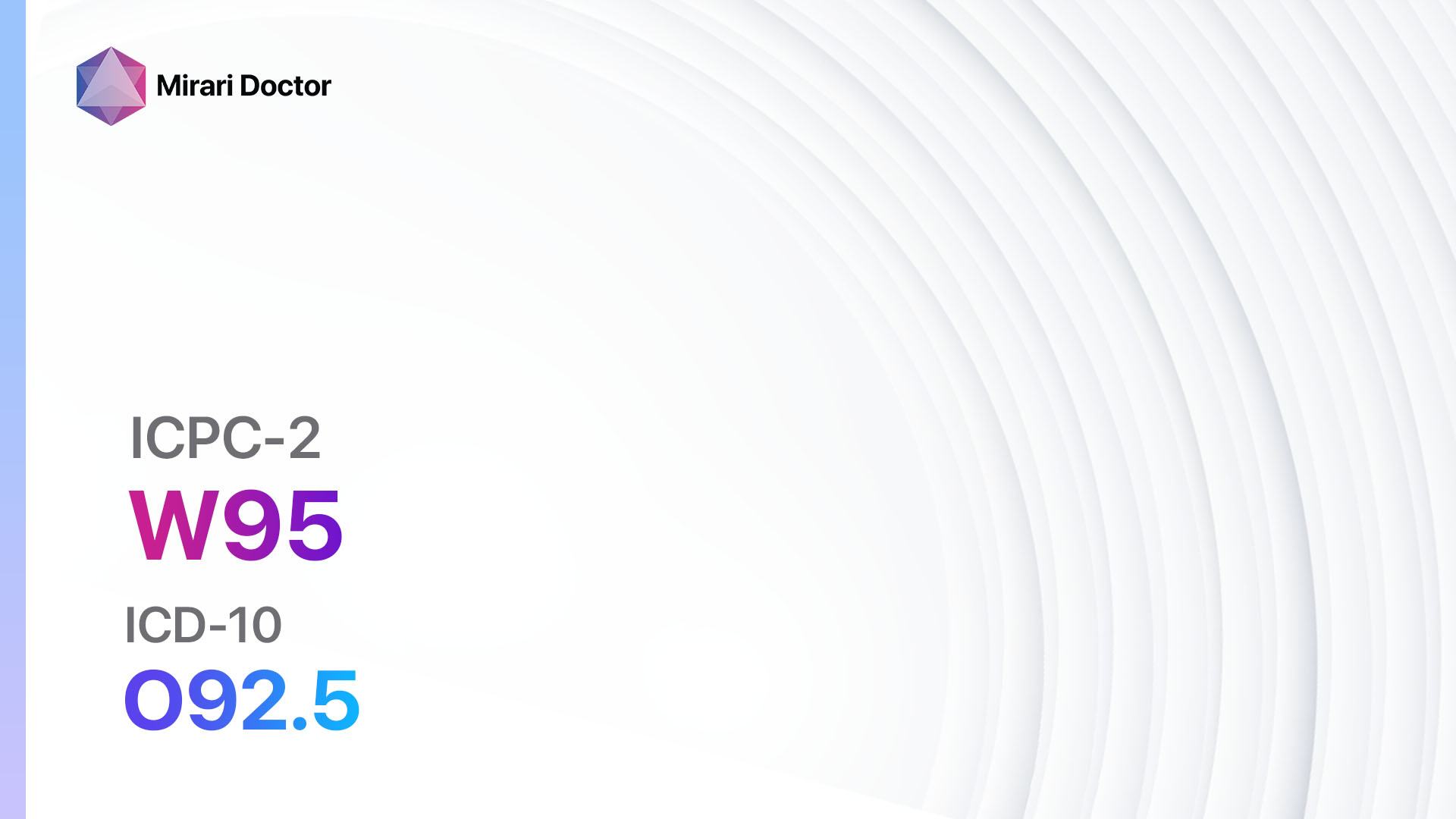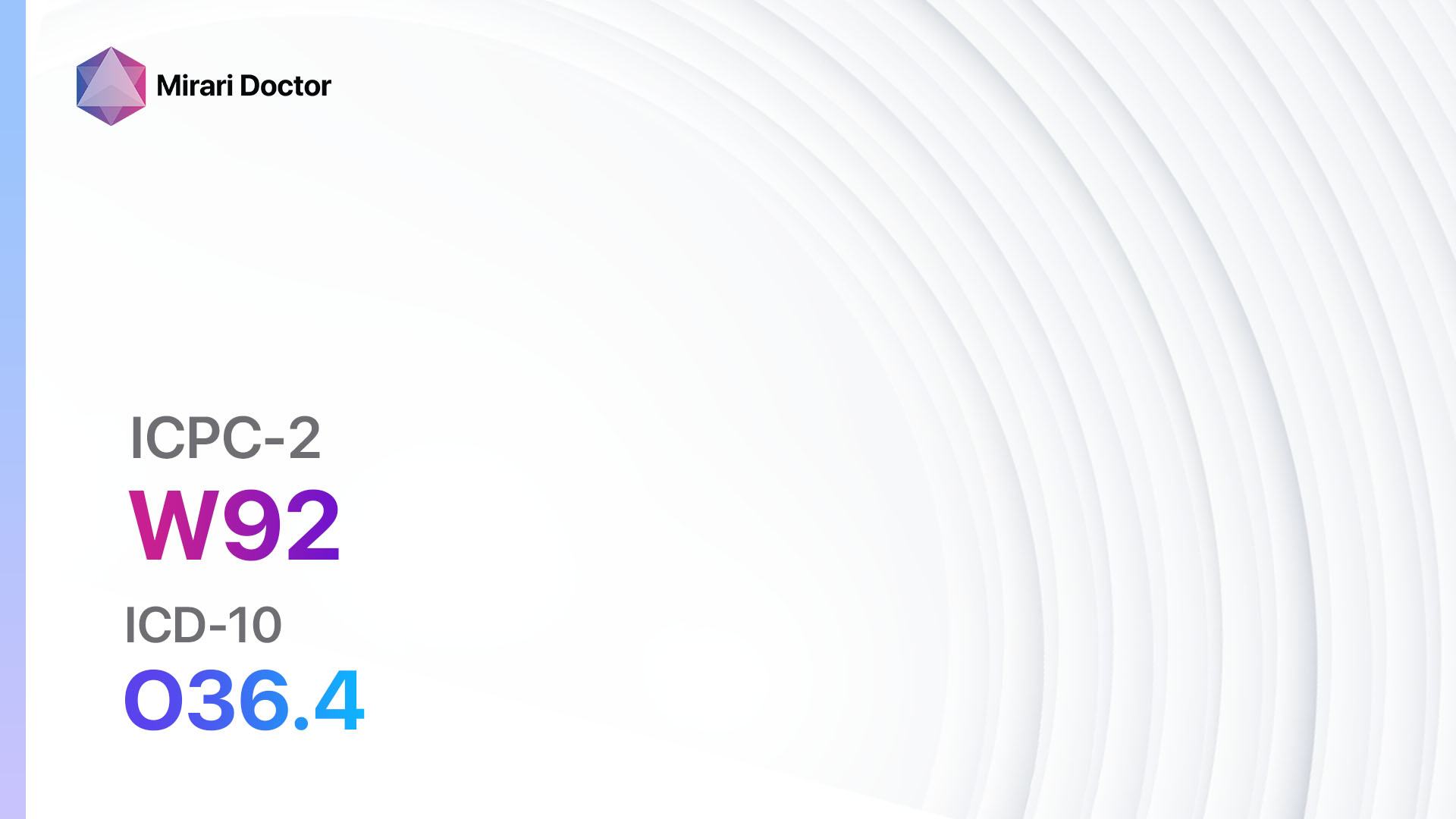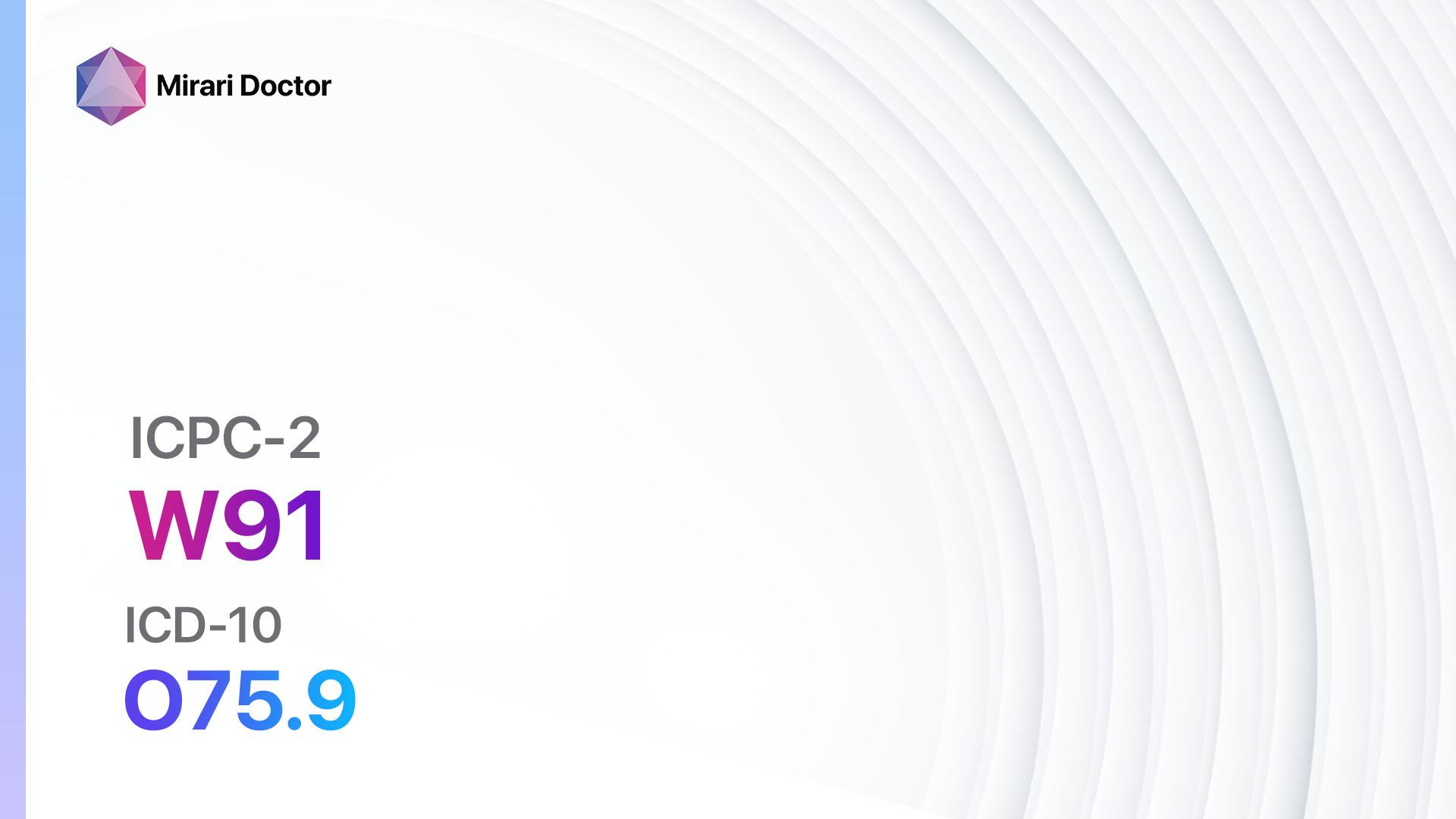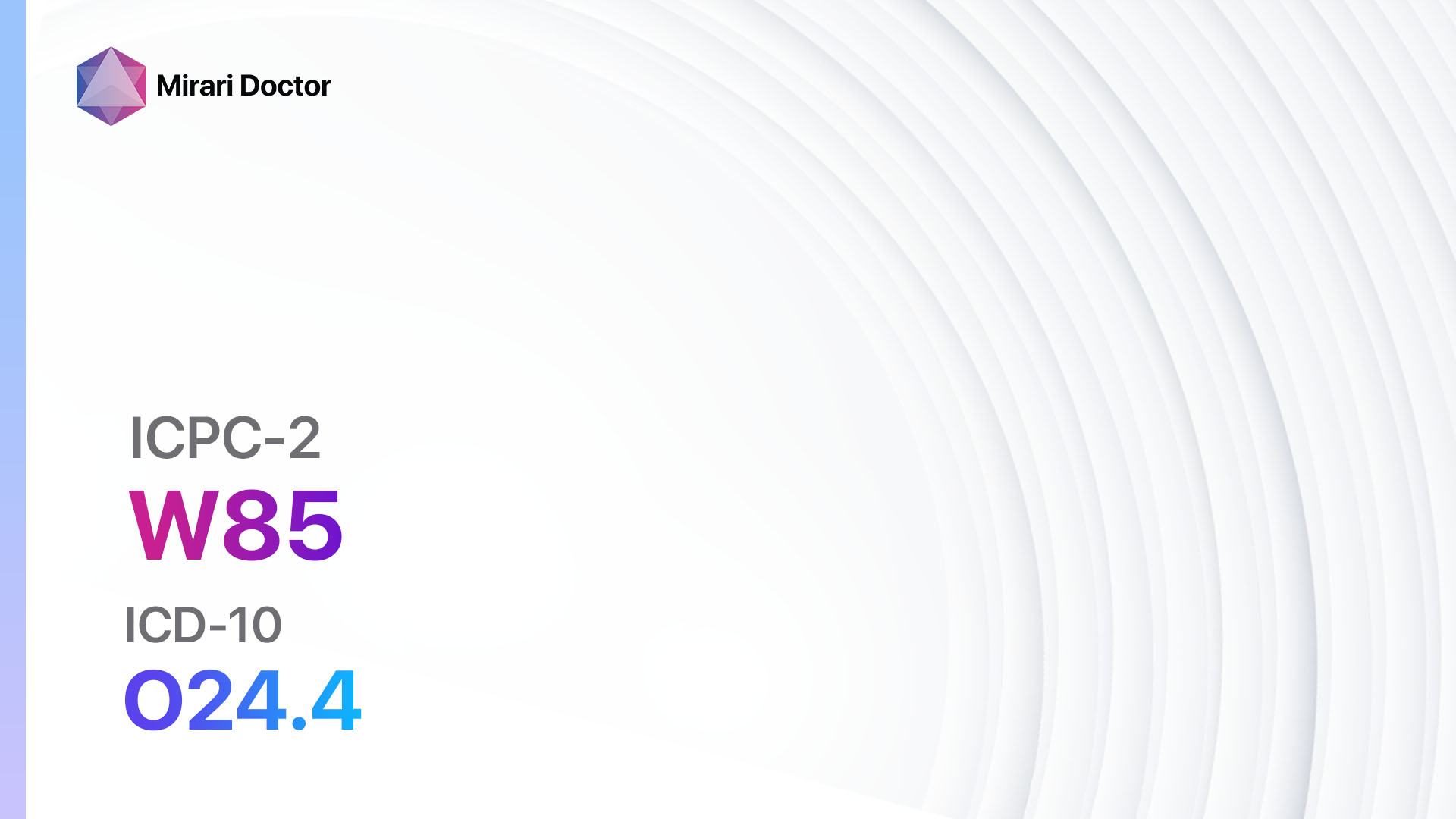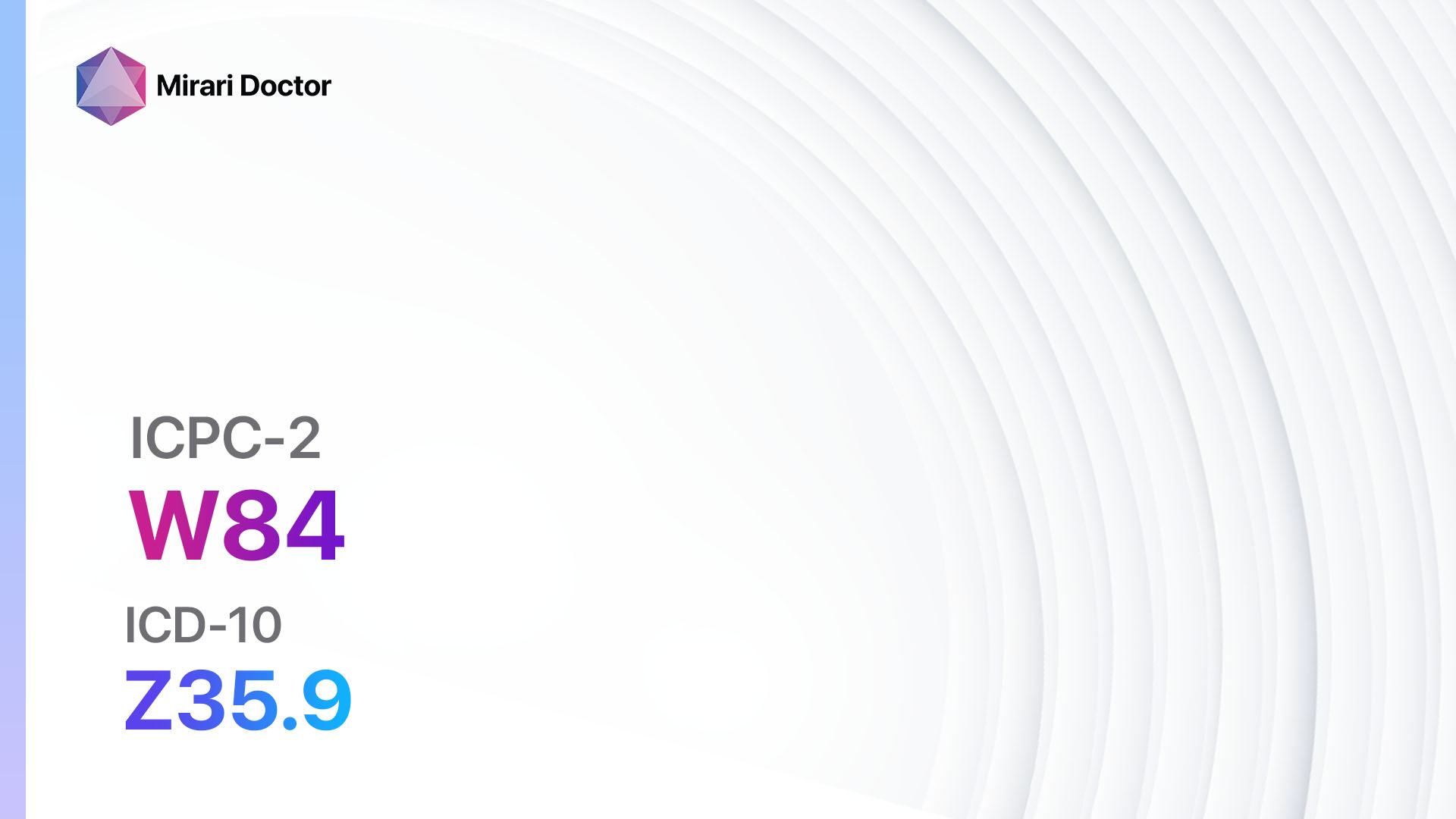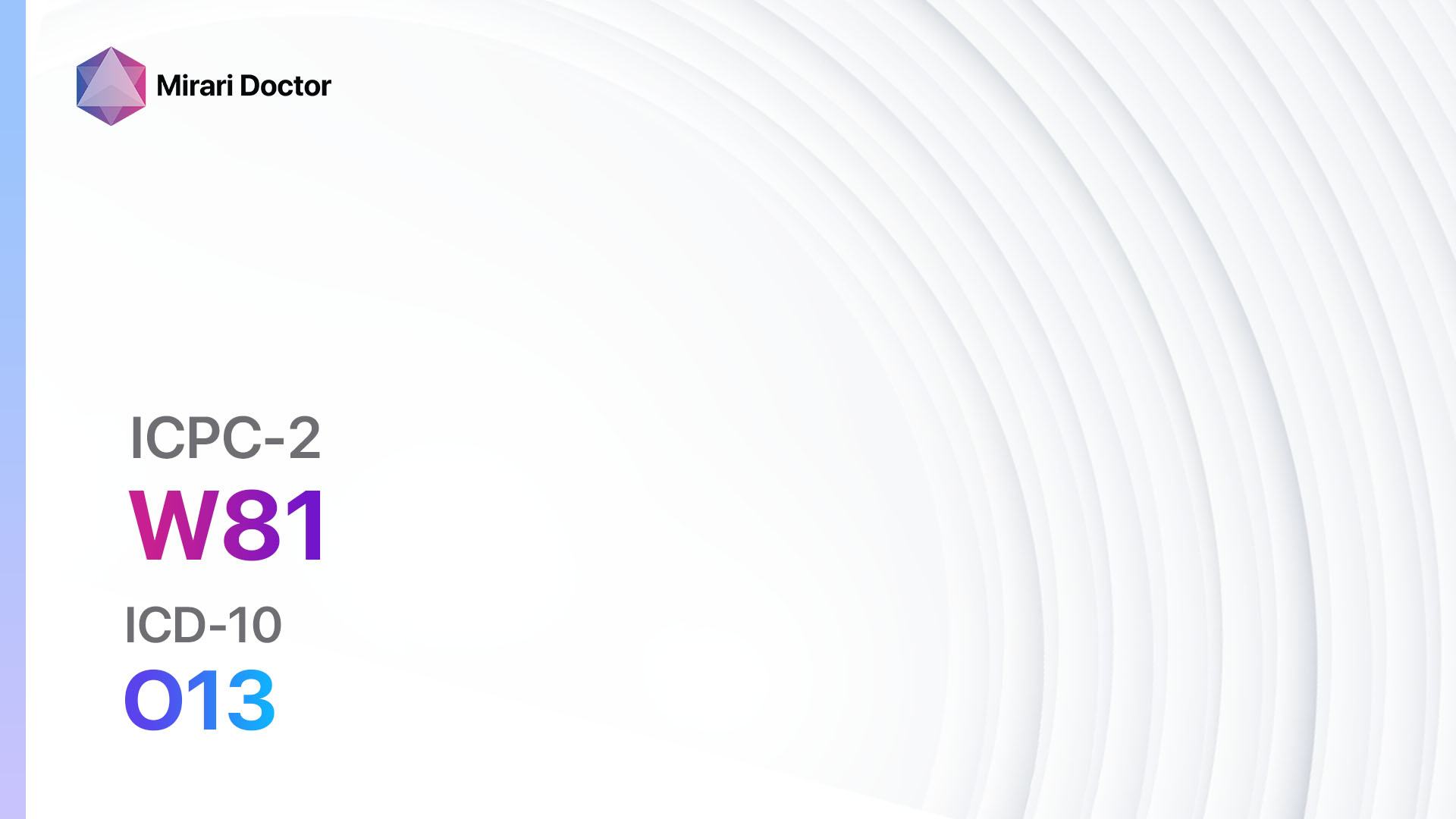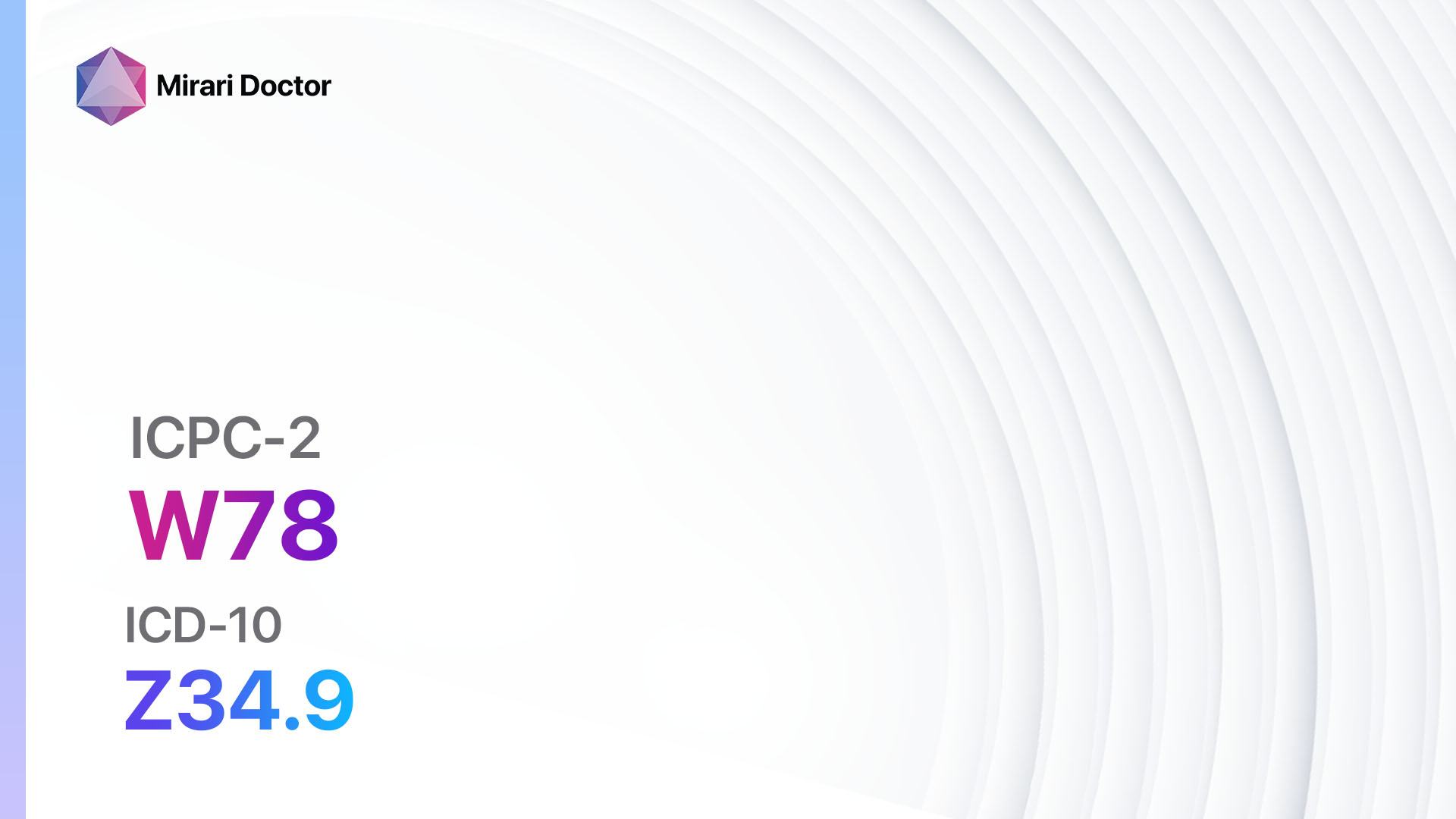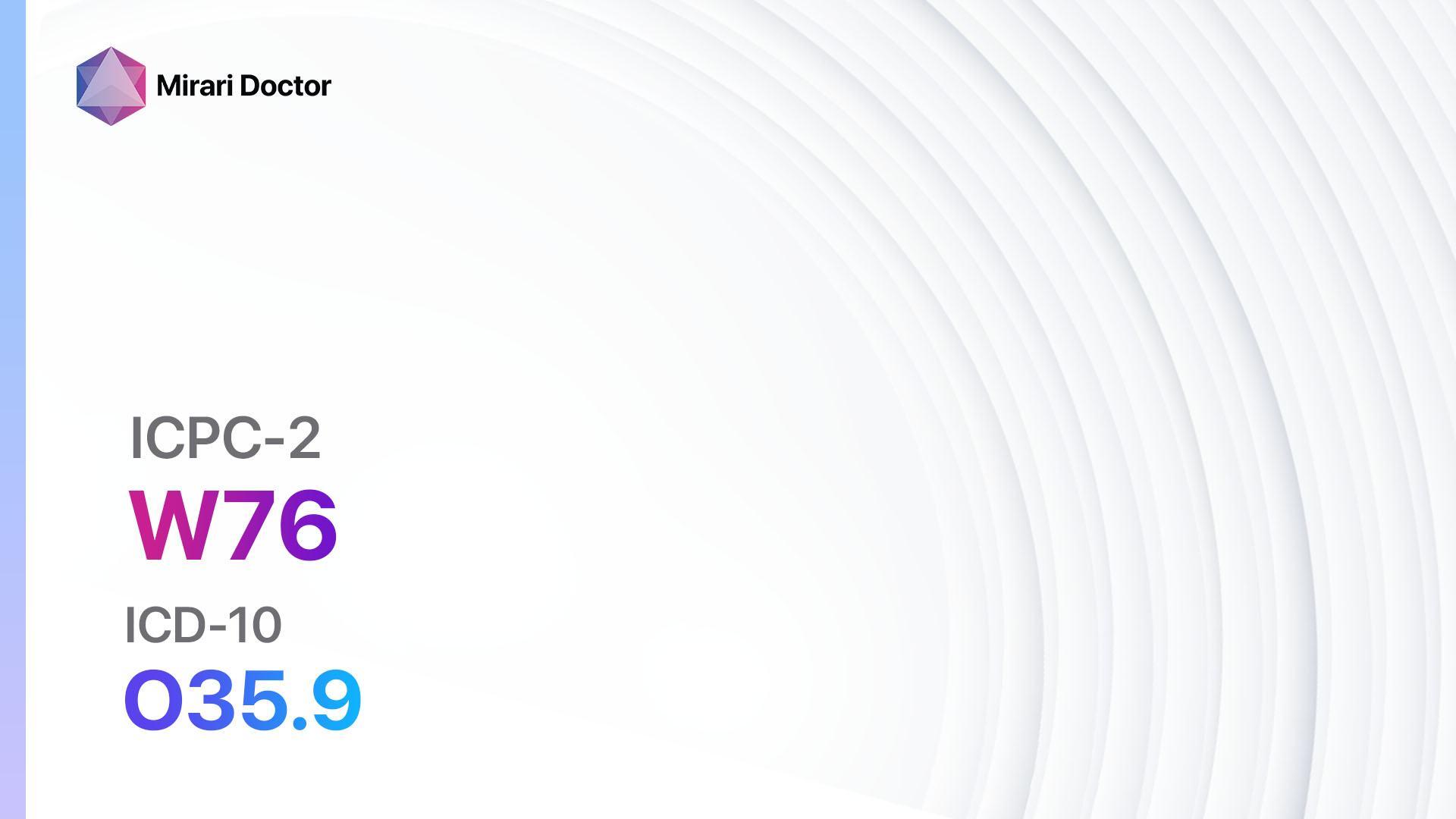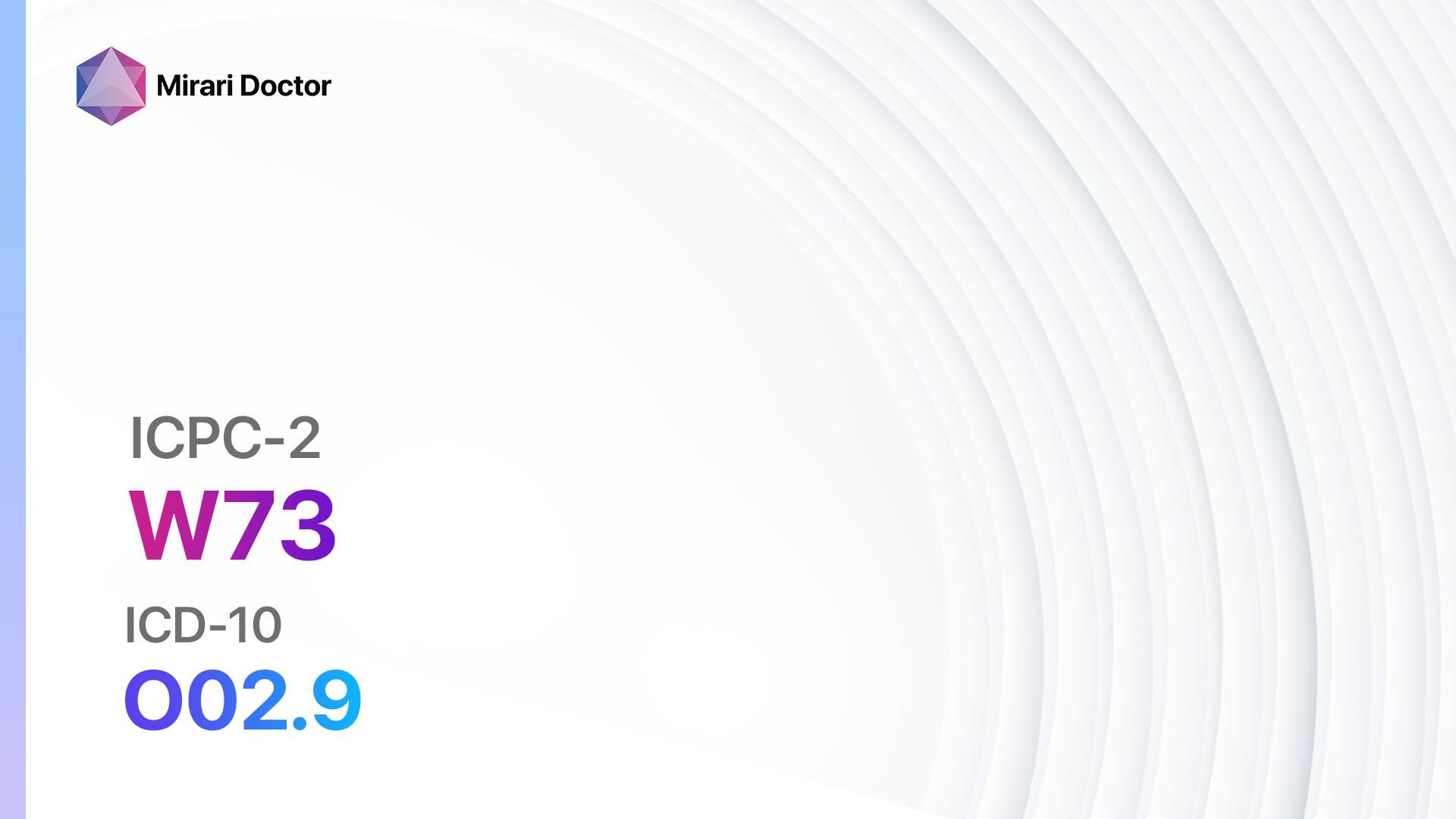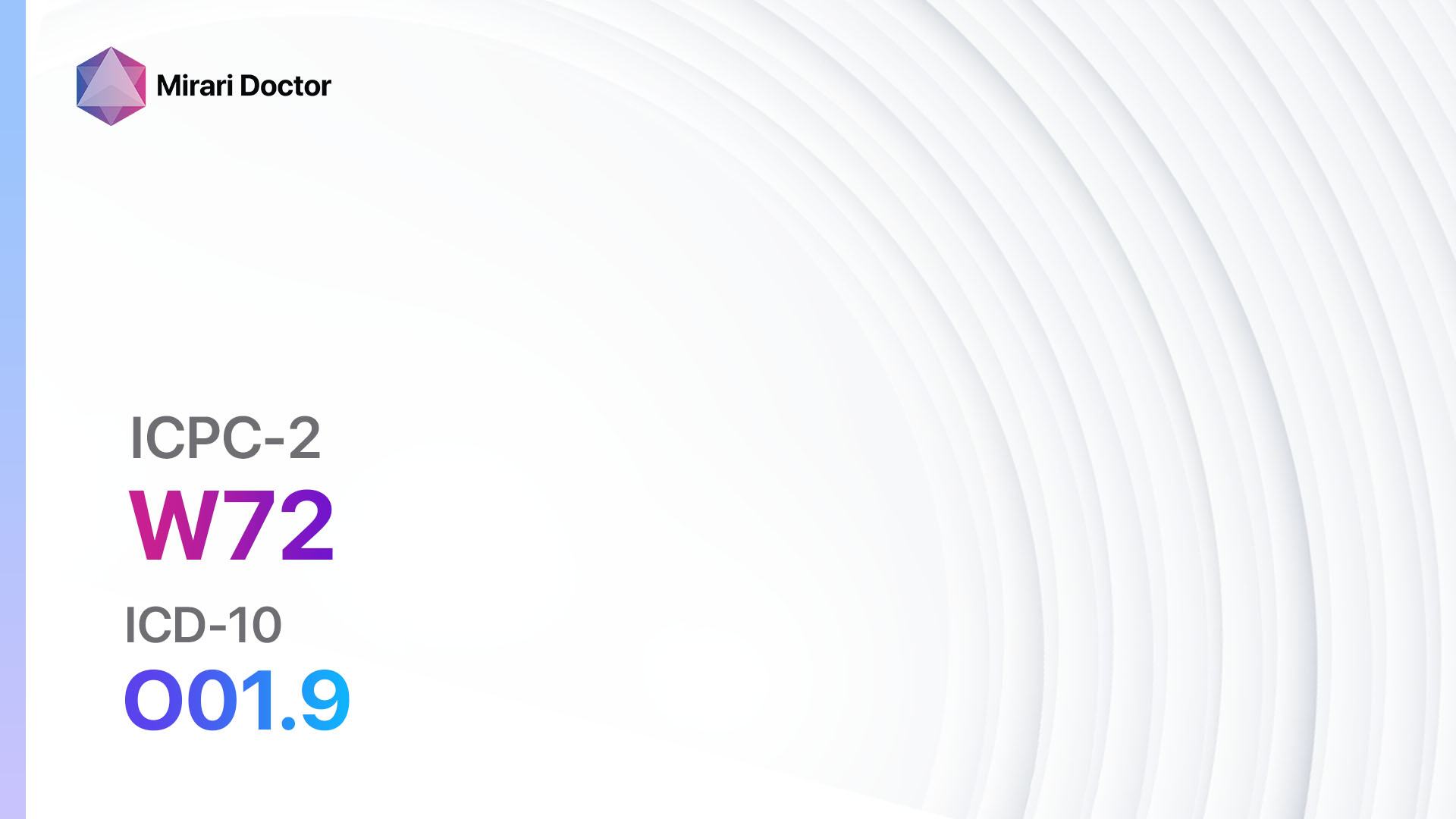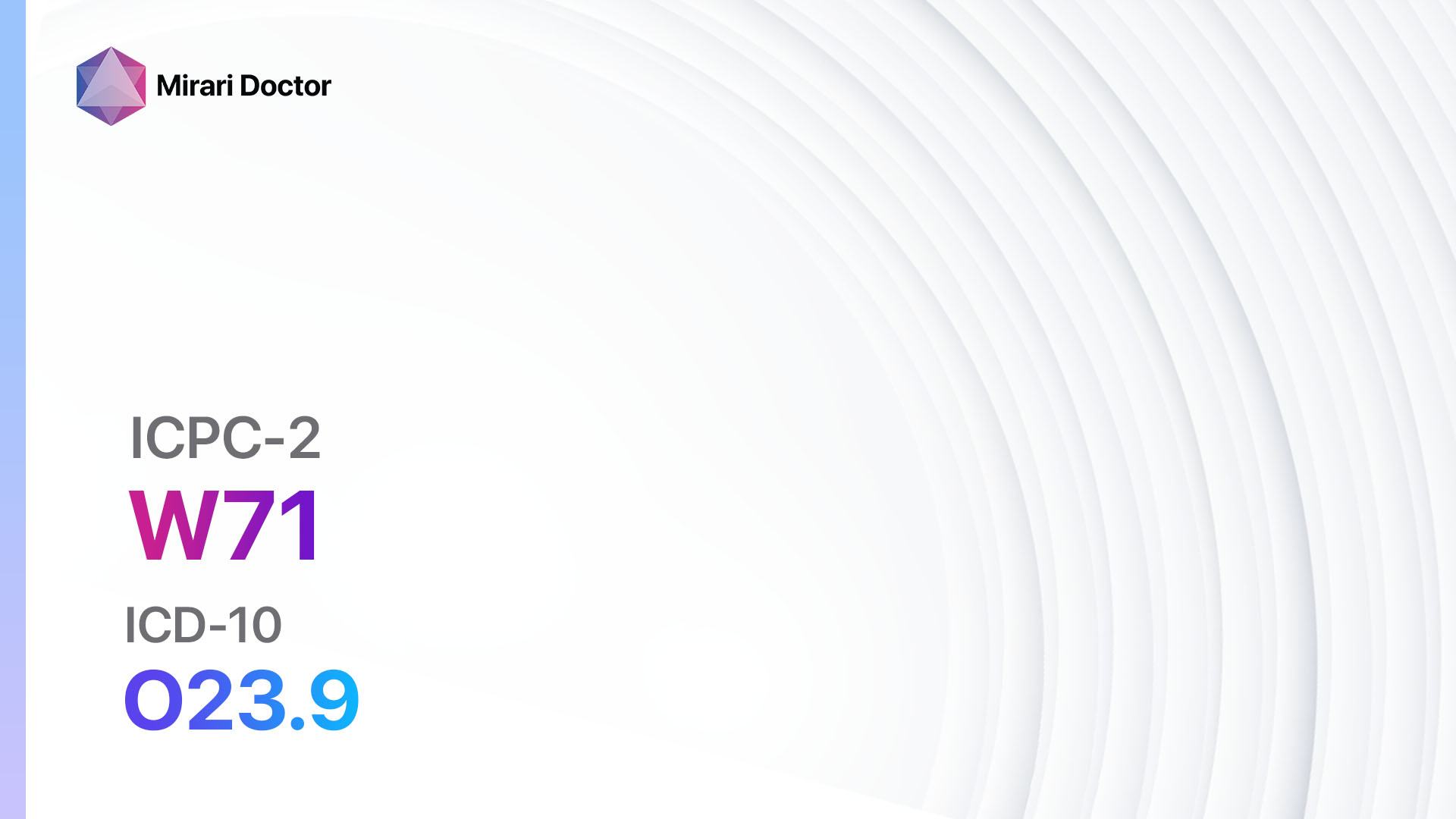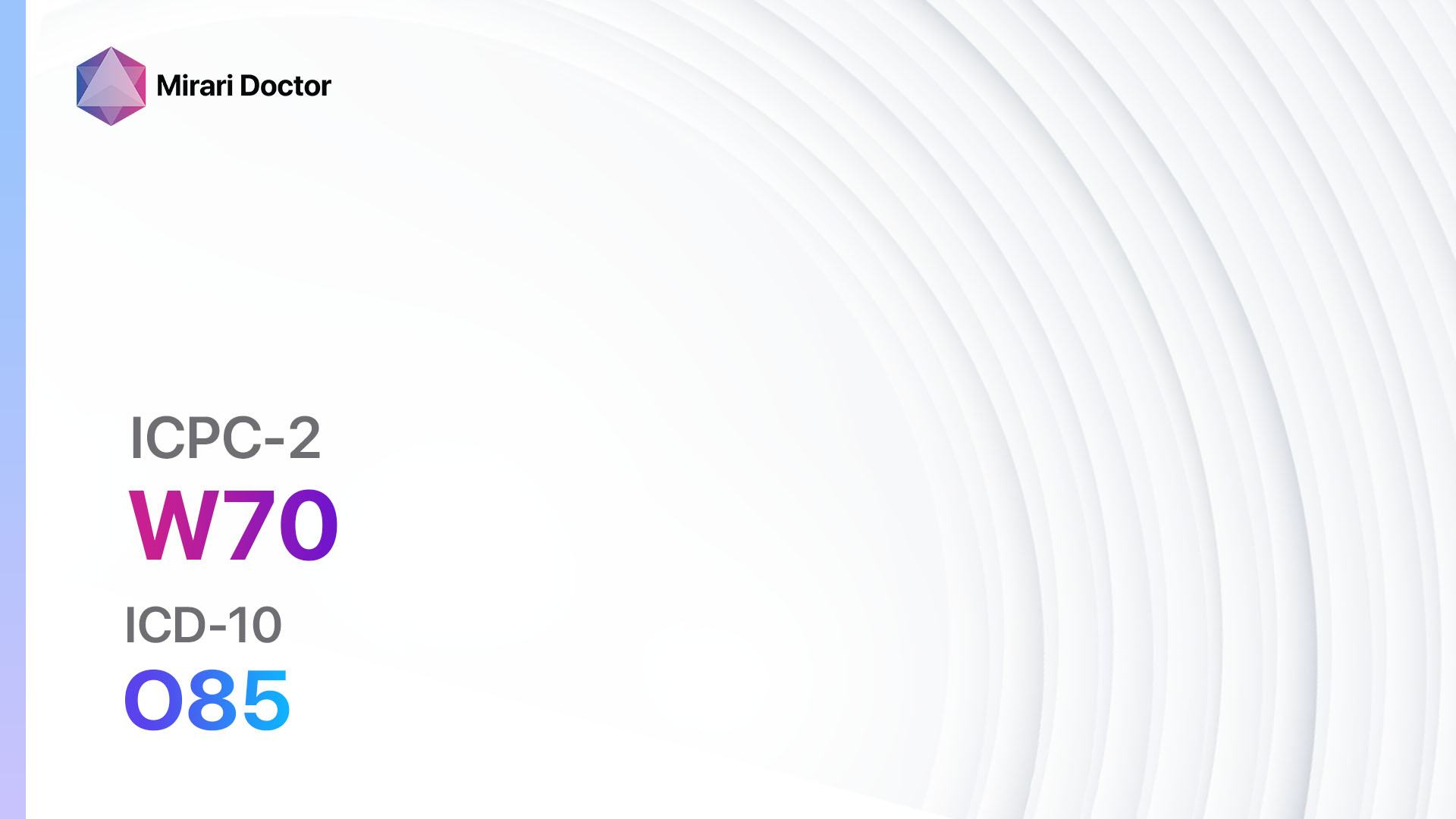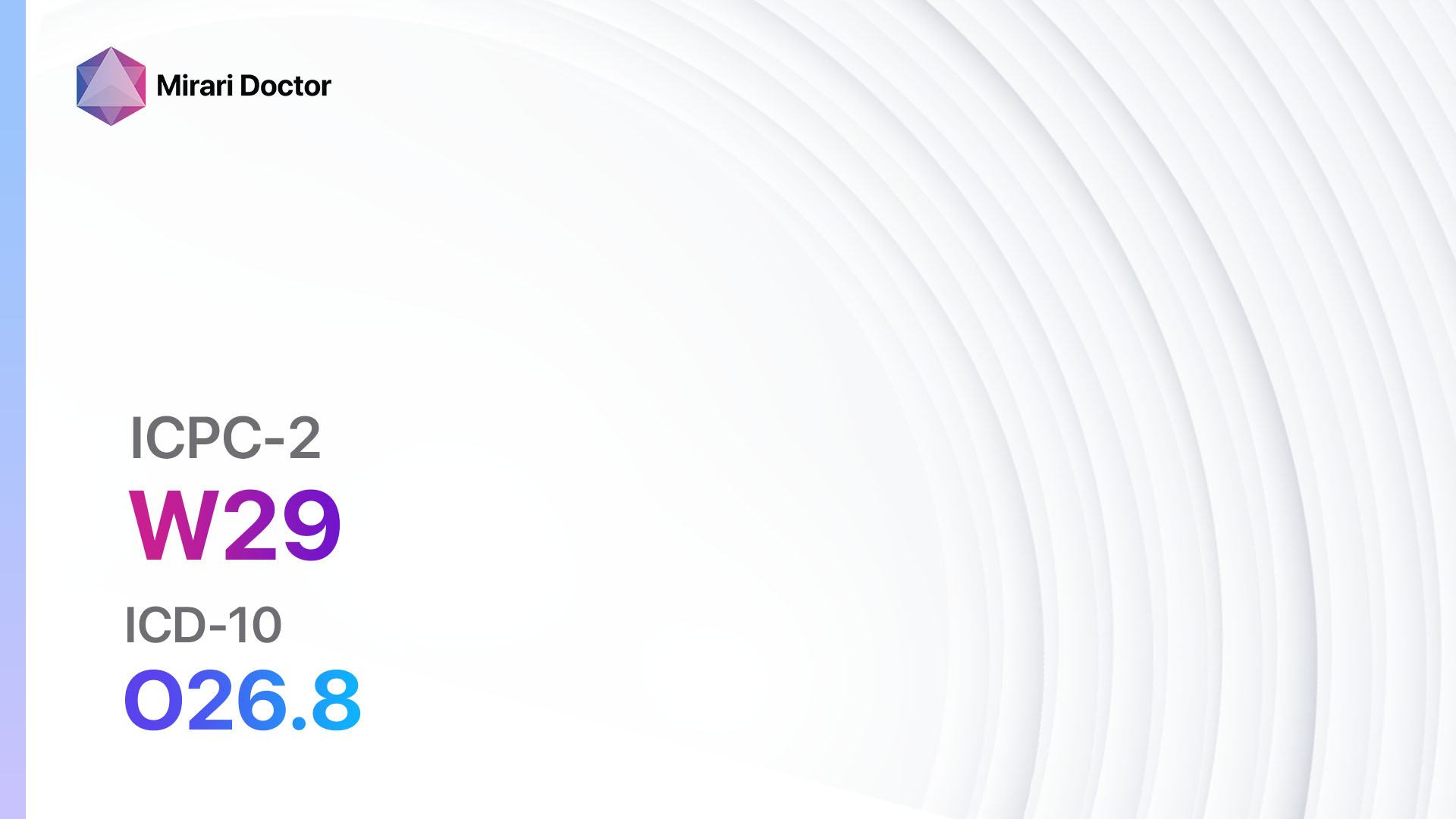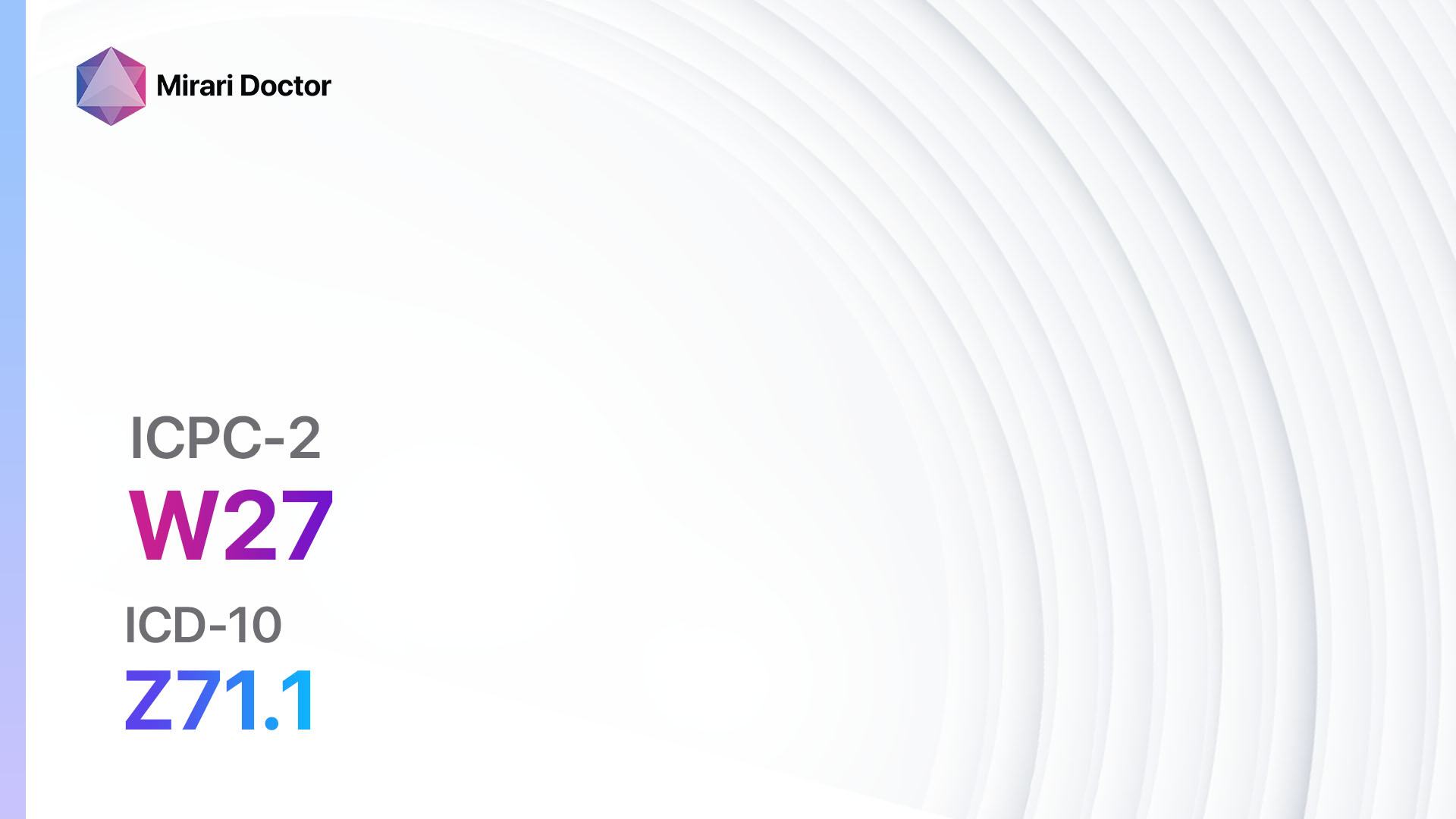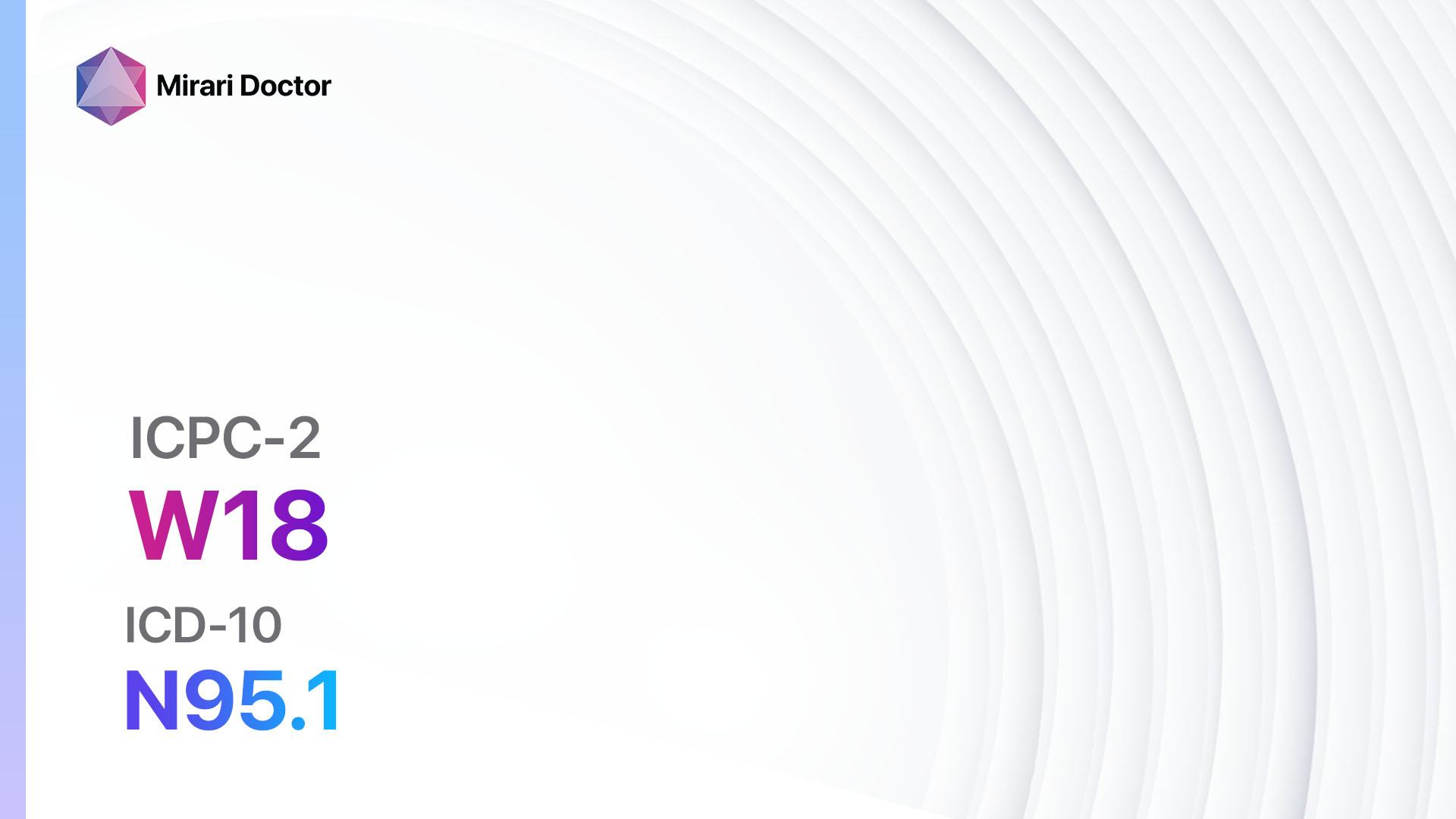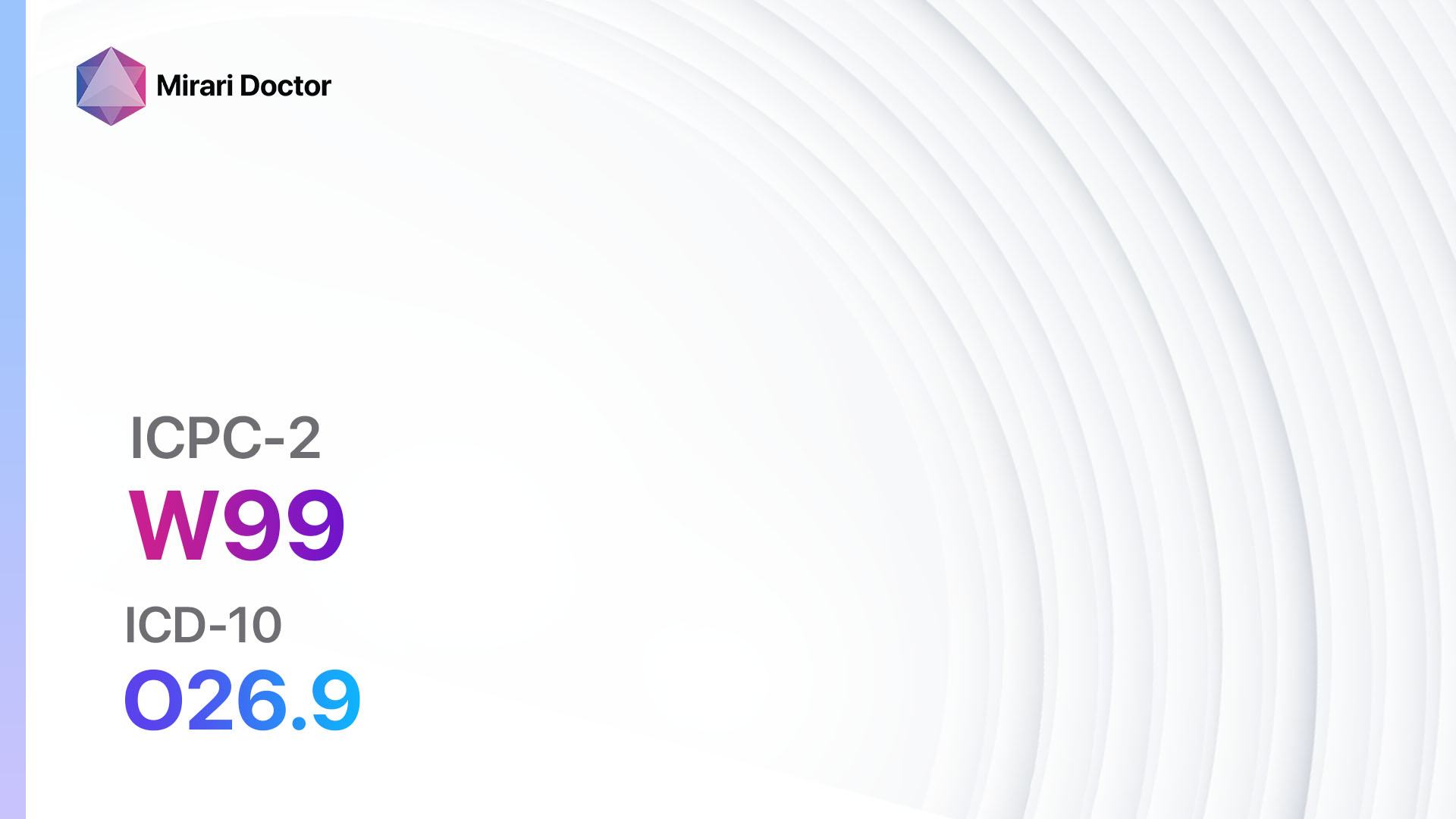
Introduction
Disorder pregnancy/delivery refers to any complications or abnormalities that occur during pregnancy or delivery, excluding specific conditions such as pre-eclampsia or gestational diabetes[1]. This guide aims to provide an overview of the symptoms, causes, diagnostic steps, possible interventions, and lifestyle interventions for disorder pregnancy/delivery.
Symptoms
- Vaginal bleeding
- Severe abdominal pain
- Decreased fetal movement
- Preterm labor
- Infection[2]
Causes
- Placental abruption
- Uterine rupture
- Incompetent cervix
- Maternal infections
- Fetal abnormalities[3]
Diagnostic Steps
Medical History
- Gather information about the patient’s previous pregnancies and deliveries
- Ask about any previous complications or abnormalities during pregnancy or delivery
- Inquire about any medical conditions or risk factors that may contribute to disorder pregnancy/delivery[4]
Physical Examination
- Perform a thorough abdominal examination to assess for any signs of tenderness or abnormality
- Conduct a pelvic examination to evaluate the cervix and rule out any cervical incompetence
- Check for signs of infection, such as fever or abnormal vaginal discharge[5]
Laboratory Tests
- Complete blood count (CBC) to assess for anemia or infection
- Blood typing and Rh factor to determine the need for Rh immune globulin
- Urine analysis to check for proteinuria or urinary tract infection
- Cultures to identify any bacterial or viral infections
- Genetic testing to evaluate for any fetal abnormalities[6]
Diagnostic Imaging
- Ultrasound to assess fetal growth, placental position, and detect any abnormalities
- Magnetic resonance imaging (MRI) to provide detailed images of the uterus and surrounding structures
- Doppler ultrasound to evaluate blood flow to the placenta and fetus[7]
Other Tests
- Non-stress test to monitor fetal heart rate and movement
- Biophysical profile to assess fetal well-being
- Amniocentesis to analyze amniotic fluid for genetic abnormalities or infection[8]
Follow-up and Patient Education
- Schedule regular prenatal visits to monitor the progress of the pregnancy
- Educate the patient about the signs and symptoms of complications and when to seek immediate medical attention
- Provide information about the importance of a healthy lifestyle, including proper nutrition and exercise, to reduce the risk of disorder pregnancy/delivery[9][10]
Possible Interventions
Traditional Interventions
Medications:
Top 5 drugs for disorder pregnancy/delivery:
- Oxytocin:
- Cost: $10-$50 per vial.
- Contraindications: Hypersensitivity, fetal distress.
- Side effects: Nausea, vomiting, uterine hyperstimulation.
- Severe side effects: Uterine rupture, water intoxication.
- Drug interactions: Nonsteroidal anti-inflammatory drugs (NSAIDs), beta-blockers.
- Warning: Continuous monitoring of fetal heart rate and uterine contractions required.
- Magnesium sulfate:
- Cost: $10-$30 per vial.
- Contraindications: Myasthenia gravis, heart block.
- Side effects: Flushing, sweating, drowsiness.
- Severe side effects: Respiratory depression, cardiac arrest.
- Drug interactions: Calcium channel blockers, neuromuscular blockers.
- Warning: Close monitoring of magnesium levels and respiratory status required.
- Antibiotics (e.g., Ampicillin, Clindamycin):
- Cost: $10-$50 per course.
- Contraindications: Allergy to penicillin or clindamycin.
- Side effects: Nausea, diarrhea, rash.
- Severe side effects: Severe allergic reactions, Clostridium difficile infection.
- Drug interactions: None significant.
- Warning: Use with caution in patients with renal impairment.
- Corticosteroids (e.g., Betamethasone, Dexamethasone):
- Cost: $10-$30 per vial.
- Contraindications: Systemic fungal infections.
- Side effects: Increased blood sugar, fluid retention.
- Severe side effects: Adrenal suppression, osteoporosis.
- Drug interactions: None significant.
- Warning: Use with caution in patients with diabetes or hypertension.
- Rho(D) immune globulin:
- Cost: $50-$100 per vial.
- Contraindications: None.
- Side effects: Local injection site reactions.
- Severe side effects: None reported.
- Drug interactions: None significant.
- Warning: Administer within 72 hours of delivery if the mother is Rh-negative.
Alternative Drugs:
- Nifedipine: Used for tocolysis to delay preterm labor.
- Indomethacin: Another option for tocolysis.
- Prostaglandin analogs: Used for cervical ripening and induction of labor.
- Antiviral medications: Used to treat maternal infections, such as herpes simplex virus or cytomegalovirus.
- Antifungal medications: Used to treat maternal fungal infections, such as candidiasis.
Surgical Procedures:
- Cesarean section: Surgical delivery of the baby through an incision in the abdomen and uterus. Cost: $20,000-$50,000.
- Cervical cerclage: Placement of a stitch around the cervix to prevent premature opening. Cost: $5,000-$10,000.
Alternative Interventions
- Acupuncture: May help reduce pain and promote relaxation during pregnancy and delivery. Cost: $60-$120 per session.
- Chiropractic care: Can help maintain proper alignment of the spine and pelvis during pregnancy. Cost: $50-$100 per session.
- Hypnotherapy: May assist in managing pain and anxiety during labor. Cost: $100-$200 per session.
- Herbal supplements: Some herbs, such as raspberry leaf or evening primrose oil, are believed to support a healthy pregnancy and labor. Cost: Varies depending on the specific supplement.
- Homeopathy: Certain homeopathic remedies may be used to address specific symptoms or promote a smoother labor. Cost: $10-$30 per remedy.
Lifestyle Interventions
- Regular exercise: Engaging in low-impact exercises, such as walking or swimming, can help maintain overall health and prepare the body for labor. Cost: Varies depending on the chosen activity.
- Healthy diet: Consuming a balanced diet rich in fruits, vegetables, lean proteins, and whole grains can provide essential nutrients for a healthy pregnancy. Cost: Varies depending on food choices.
- Stress management: Practicing relaxation techniques, such as deep breathing or meditation, can help reduce stress and promote a calm state of mind during pregnancy and delivery. Cost: Varies depending on the chosen method.
- Prenatal education classes: Attending childbirth education classes can provide valuable information and support for expectant parents. Cost: $100-$300 per class.
- Supportive care: Seeking emotional support from loved ones or joining a support group can help alleviate anxiety and provide a sense of community during pregnancy and delivery. Cost: Varies depending on individual preferences.
It is important to note that the cost ranges provided are approximate and may vary depending on the location and availability of the interventions.
Mirari Cold Plasma Alternative Intervention
Understanding Mirari Cold Plasma
- Safe and Non-Invasive Treatment: Mirari Cold Plasma is a safe and non-invasive treatment option for various skin conditions. It does not require incisions, minimizing the risk of scarring, bleeding, or tissue damage.
- Efficient Extraction of Foreign Bodies: Mirari Cold Plasma facilitates the removal of foreign bodies from the skin by degrading and dissociating organic matter, allowing easier access and extraction.
- Pain Reduction and Comfort: Mirari Cold Plasma has a local analgesic effect, providing pain relief during the treatment, making it more comfortable for the patient.
- Reduced Risk of Infection: Mirari Cold Plasma has antimicrobial properties, effectively killing bacteria and reducing the risk of infection.
- Accelerated Healing and Minimal Scarring: Mirari Cold Plasma stimulates wound healing and tissue regeneration, reducing healing time and minimizing the formation of scars.
Mirari Cold Plasma Prescription
Video instructions for using Mirari Cold Plasma Device – W99 Disorder pregnancy/delivery other (ICD-10:O26.9)
| Mild | Moderate | Severe |
| Mode setting: 1 (Infection) Location: 5 (Lungs) Morning: 15 minutes, Evening: 15 minutes |
Mode setting: 1 (Infection) Location: 5 (Lungs) Morning: 30 minutes, Lunch: 30 minutes, Evening: 30 minutes |
Mode setting: 1 (Infection) Location: 5 (Lungs) Morning: 30 minutes, Lunch: 30 minutes, Evening: 30 minutes |
| Mode setting: 2 (Wound Healing) Location: 2 (Prostate & Uterus) Morning: 15 minutes, Evening: 15 minutes |
Mode setting: 2 (Wound Healing) Location: 2 (Prostate & Uterus) Morning: 30 minutes, Lunch: 30 minutes, Evening: 30 minutes |
Mode setting: 2 (Wound Healing) Location: 2 (Prostate & Uterus) Morning: 30 minutes, Lunch: 30 minutes, Evening: 30 minutes |
| Mode setting: 7 (Immunotherapy) Location: 1 (Sacrum) Morning: 15 minutes, Evening: 15 minutes |
Mode setting: 7 (Immunotherapy) Location: 1 (Sacrum) Morning: 30 minutes, Lunch: 30 minutes, Evening: 30 minutes |
Mode setting: 7 (Immunotherapy) Location: 1 (Sacrum) Morning: 30 minutes, Lunch: 30 minutes, Evening: 30 minutes |
| Total Morning: 45 minutes approx. $7.50 USD, Evening: 45 minutes approx. $7.50 USD |
Total Morning: 90 minutes approx. $15 USD, Lunch: 90 minutes approx. $15 USD, Evening: 90 minutes approx. $15 USD |
Total Morning: 90 minutes approx. $15 USD, Lunch: 90 minutes approx. $15 USD, Evening: 90 minutes approx. $15 USD |
| Usual treatment for 7-60 days approx. $105 USD – $900 USD | Usual treatment for 6-8 weeks approx. $1,890 USD – $2,520 USD |
Usual treatment for 3-6 months approx. $4,050 USD – $8,100 USD
|
 |
|
Use the Mirari Cold Plasma device to treat Disorder pregnancy/delivery, other effectively.
WARNING: MIRARI COLD PLASMA IS DESIGNED FOR THE HUMAN BODY WITHOUT ANY ARTIFICIAL OR THIRD PARTY PRODUCTS. USE OF OTHER PRODUCTS IN COMBINATION WITH MIRARI COLD PLASMA MAY CAUSE UNPREDICTABLE EFFECTS, HARM OR INJURY. PLEASE CONSULT A MEDICAL PROFESSIONAL BEFORE COMBINING ANY OTHER PRODUCTS WITH USE OF MIRARI.
Step 1: Cleanse the Skin
- Start by cleaning the affected area of the skin with a gentle cleanser or mild soap and water. Gently pat the area dry with a clean towel.
Step 2: Prepare the Mirari Cold Plasma device
- Ensure that the Mirari Cold Plasma device is fully charged or has fresh batteries as per the manufacturer’s instructions. Make sure the device is clean and in good working condition.
- Switch on the Mirari device using the power button or by following the specific instructions provided with the device.
- Some Mirari devices may have adjustable settings for intensity or treatment duration. Follow the manufacturer’s instructions to select the appropriate settings based on your needs and the recommended guidelines.
Step 3: Apply the Device
- Place the Mirari device in direct contact with the affected area of the skin. Gently glide or hold the device over the skin surface, ensuring even coverage of the area experiencing.
- Slowly move the Mirari device in a circular motion or follow a specific pattern as indicated in the user manual. This helps ensure thorough treatment coverage.
Step 4: Monitor and Assess:
- Keep track of your progress and evaluate the effectiveness of the Mirari device in managing your Disorder pregnancy/delivery, other. If you have any concerns or notice any adverse reactions, consult with your health care professional.
Note
This guide is for informational purposes only and should not replace the advice of a medical professional. Always consult with your healthcare provider or a qualified medical professional for personal advice, diagnosis, or treatment. Do not solely rely on the information presented here for decisions about your health. Use of this information is at your own risk. The authors of this guide, nor any associated entities or platforms, are not responsible for any potential adverse effects or outcomes based on the content.
Mirari Cold Plasma System Disclaimer
- Purpose: The Mirari Cold Plasma System is a Class 2 medical device designed for use by trained healthcare professionals. It is registered for use in Thailand and Vietnam. It is not intended for use outside of these locations.
- Informational Use: The content and information provided with the device are for educational and informational purposes only. They are not a substitute for professional medical advice or care.
- Variable Outcomes: While the device is approved for specific uses, individual outcomes can differ. We do not assert or guarantee specific medical outcomes.
- Consultation: Prior to utilizing the device or making decisions based on its content, it is essential to consult with a Certified Mirari Tele-Therapist and your medical healthcare provider regarding specific protocols.
- Liability: By using this device, users are acknowledging and accepting all potential risks. Neither the manufacturer nor the distributor will be held accountable for any adverse reactions, injuries, or damages stemming from its use.
- Geographical Availability: This device has received approval for designated purposes by the Thai and Vietnam FDA. As of now, outside of Thailand and Vietnam, the Mirari Cold Plasma System is not available for purchase or use.
References
- Moldenhauer, J. S. (2024). Introduction to Complications of Labor and Delivery. MSD Manual Consumer Version. Retrieved from https://www.msdmanuals.com/home/women-s-health-issues/complications-of-labor-and-delivery/introduction-to-complications-of-labor-and-delivery
- Healthline. (n.d.). Complications During Pregnancy and Delivery. Retrieved from https://www.healthline.com/health/pregnancy/delivery-complications
- National Institute of Child Health and Human Development. (2023). What are some common complications during labor and delivery? Retrieved from https://www.nichd.nih.gov/health/topics/labor-delivery/topicinfo/complications
- Pregnancy Birth and Baby. (n.d.). Interventions during labour. Retrieved from https://www.pregnancybirthbaby.org.au/interventions-during-labour
- Schrey-Petersen, S., Tauscher, A., Dathan-Stumpf, A., & Stepan, H. (2021). Diseases and Complications of the Puerperium. Deutsches Ärzteblatt International, 118(26), 439-446.
- ScienceDirect Topics. (n.d.). Complication of Childbirth. Retrieved from https://www.sciencedirect.com/topics/medicine-and-dentistry/complication-of-childbirth
- Medical News Today. (n.d.). Labor complications: 10 common problems. Retrieved from https://www.medicalnewstoday.com/articles/307462
- Bunce, E. E. (2024). Introduction to Symptoms During Pregnancy. MSD Manual Consumer Version. Retrieved from https://www.msdmanuals.com/home/women-s-health-issues/symptoms-during-pregnancy/introduction-to-symptoms-during-pregnancy
- Dungan, J. S. (n.d.). Prenatal Testing for Genetic Disorders and Birth Defects. MSD Manual Consumer Version. Retrieved from https://www.msdmanuals.com/home/women-s-health-issues/detection-of-genetic-disorders-before-and-during-pregnancy/prenatal-testing-for-genetic-disorders-and-birth-defects
- Webb, R., Bond, R., Romero-Gonzalez, B., Mycroft, R., & Ayers, S. (2021). Interventions to treat fear of childbirth in pregnancy: a systematic review and meta-analysis. BMC Pregnancy and Childbirth, 21(1), 275.
Related articles
Made in USA



